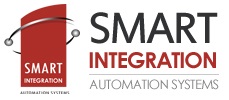Buzzwords like ‘social distancing’, ‘self-quarantining’ and ‘hand washing/sanitising’ became part of our daily lives after lockdown was announced in March 2020. Along with these constant reminders to ‘flatten the curve’ by remaining compliant with government regulations, we have seen an interesting move to one of the traditionally costlier access control technologies: facial recognition.
According to Alex Penhaligon, South Africa Business Department: project sales manager at Hikvision, there has been a sudden and direct move away from fingerprint technology during the past few months. “It’s safe to say that fingerprint biometric technology was predominant in the pre-COVID-19 era. However, in an effort to enforce decreased unnecessary contact with public and shared surfaces, touchless technology is stepping up to the plate in the access control and T&A; (time and attendance) arena.”
He explains that facial recognition technology not only allows contactless recognition to take place, but is also extremely useful in assisting with social distancing. “Fingerprint technology, by its very nature, means that you are required to place your finger onto the reader’s surface. Therefore, every time a person uses a fingerprint reader they are potentially providing an optimal environment for the transmission of germs or microorganisms related to COVID-19 and other communicable diseases.”

Penhaligon believes that the momentum created in the adoption of facial recognition technology will continue after COVID-19 as society seeks acceptable ways to coexist in the ‘new normal’. As more organisations deploy facial recognition technology, the cost of this technology will also be substantially reduced as a result of increased demand in the marketplace, making it a more affordable option for organisations.
He adds that as artificial intelligence (AI) technology organisations continue to develop increasingly sophisticated algorithms, so the gap between facial recognition technology and fingerprint biometric technology will narrow. Algorithm-enabled facial recognition terminals featuring advanced deep learning technology increase the accuracy of facial recognition to over 99%, with verification speeds of under 0,2 seconds – even in darkness.
Different countries have various requirements in terms of access control. Amongst other benefits, AI will allow the development of a rule or engine to recognise people from different areas, based on these exceptions and requirements. Hikvision’s 19000-strong R&D; team has used this opportunity to take the existing facial recognition readers and deepen the technology offering, resulting in lowered false recognition rates.
“Our R&D; team didn’t have to start from scratch with the development of AI and facial recognition algorithms. This technology already existed, we have merely made refinements that encapsulate the changing environment and the demands of compliance with COVID-19 reduction methods, allowing us to very quickly refine our solutions. This decrease in false recognition has resulted in our facial recognition reader technology now being ideally suited not only to access control, but importantly, also to T&A,” says Penhaligon.

“Due to Hikvision’s open protocol and the work done by their R&D; team we are able to retrofit Hikvision facial recognition devices into existing access control systems. So, upgrading from access cards/biometric systems to facial recognition systems is not a brand new installation but rather an upgrade, which is more cost effective,” says Glenn Noome, director at Smart Integration.
“Facial recognition technology is not only used for access control but can ultimately be used as a personal verification method. If the databases are shared, it may be used at Home Affairs or even in the healthcare environment to make things more efficient, reduce fraud and add security,” says Noome.
There is a happy marriage between facial recognition technology and thermal imaging cameras, with the latter extending from its more traditional surveillance role into one that assists in pinpointing higher-than-normal body temperatures in humans. Thermal cameras provide clearer imaging and more accurate temperature measurement, to advanced intelligence that allows for accurate behaviour analysis.
As organisations wrestle with the altered behavioural demands imposed by lockdown, the widespread implementation of AI-driven facial recognition technology, together with synergistic technologies such as thermal body imaging, will definitely provide some relief from the stresses of these necessary adjustments.
Access & Identity Management Handbook 2021 Access Control & Identity Management


